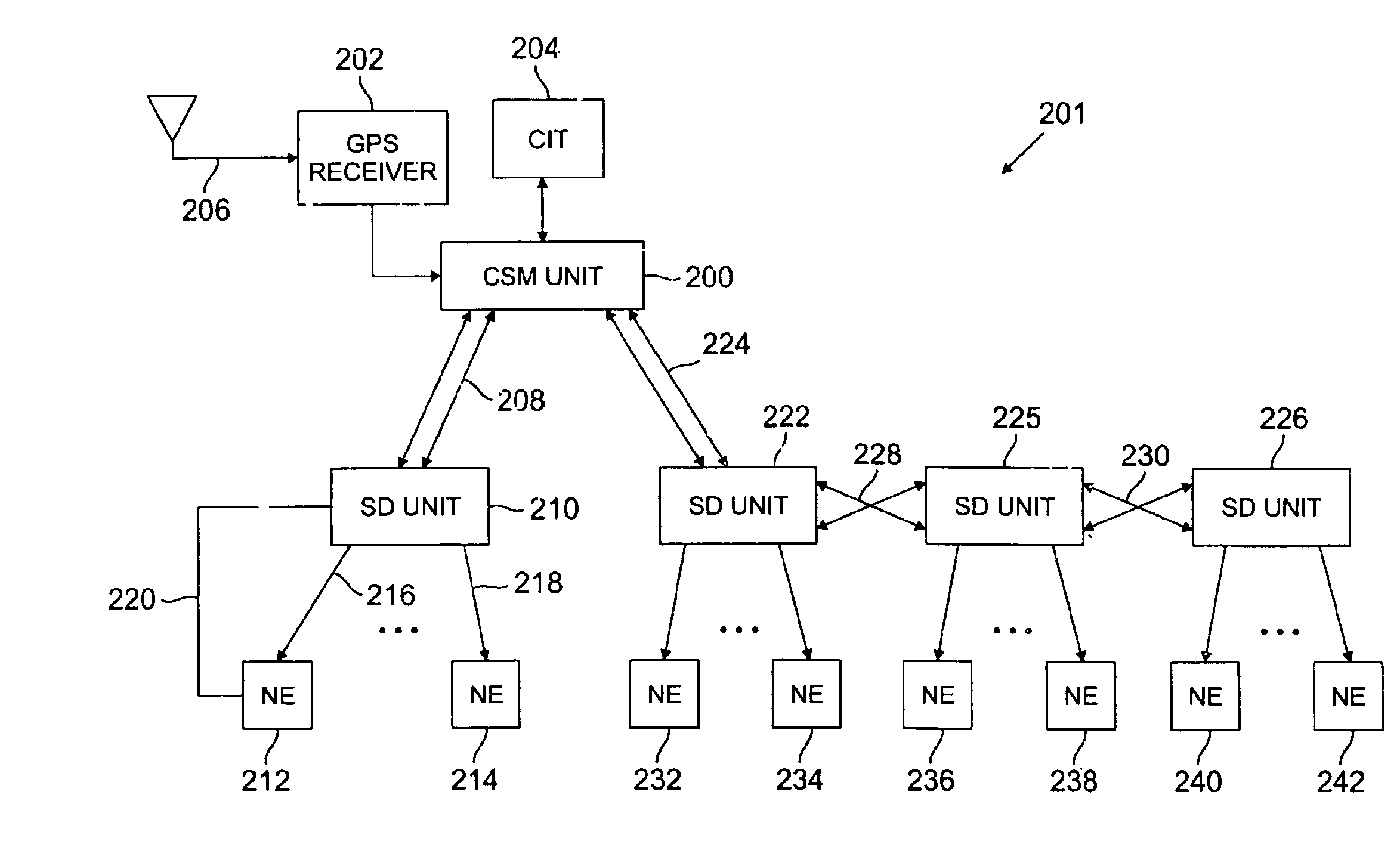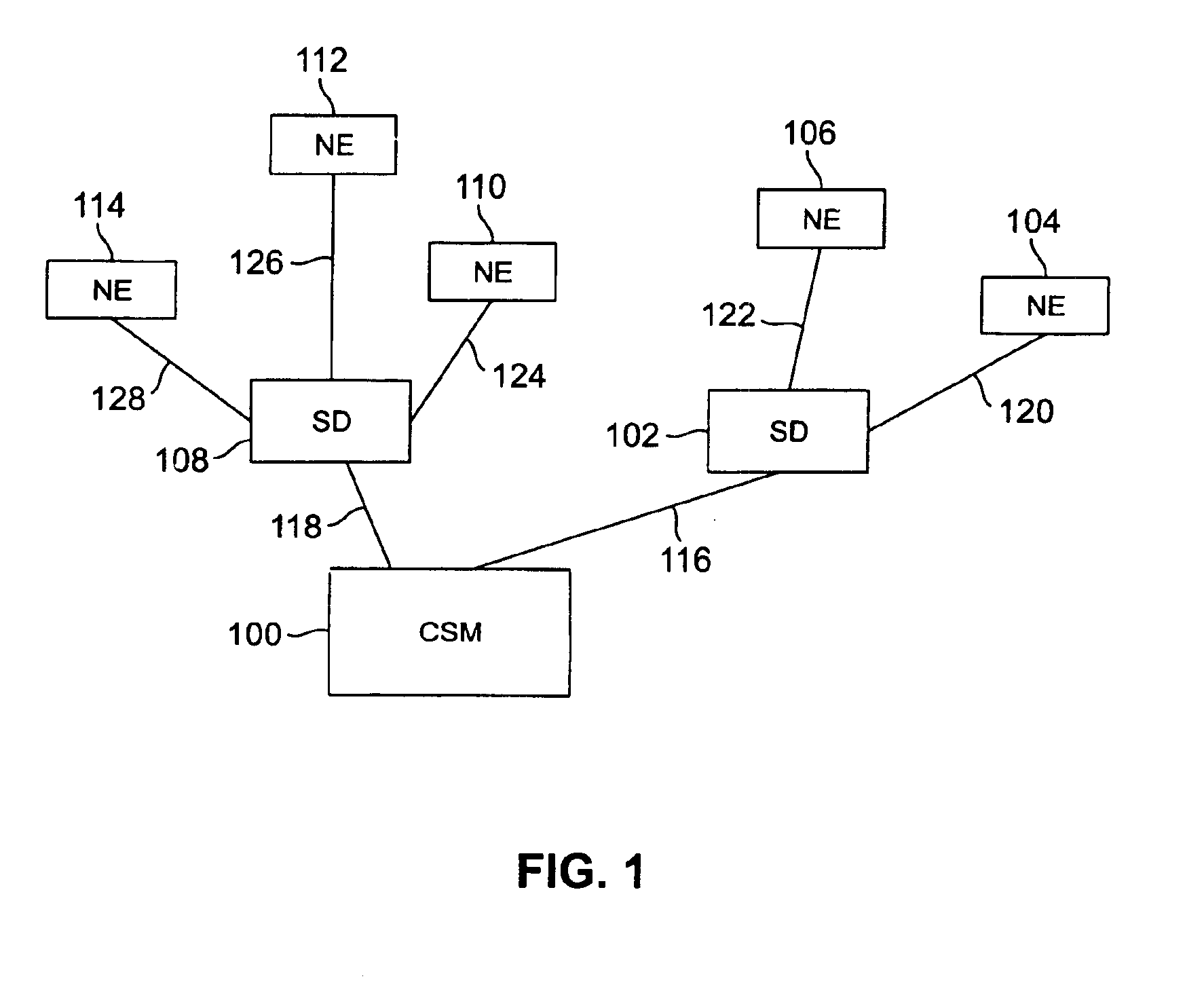Optical synchronization system
a technology of optical synchronization and optical synchronization, applied in the direction of synchronization signal speed/phase control, multiplex communication, wireless commuication services, etc., can solve the problems of significant capital expense, severely limit the size of offices that may be served, and difficult management and routing of timing cables, so as to reduce the number of links required, ensure the survivability of a portion of the active link, and avoid the cost and decrease of the reliability of fully redundant active optical links
- Summary
- Abstract
- Description
- Claims
- Application Information
AI Technical Summary
Benefits of technology
Problems solved by technology
Method used
Image
Examples
Embodiment Construction
[0015]A synchronization system in accordance with the principles of the present invention distributes synchronization signals from a central synchronizing management unit through one or more synchronization distribution units to network elements within an office that require external synchronization. In an illustrative embodiment synchronization and management signals are carried over optical links between a central synchronizing management unit and each synchronization distribution unit, and between each synchronization distribution unit and each network element. The distributed architecture of the present invention, an architecture that distributes synchronization and management signals to synchronization distribution units which, in turn, distribute signals to network elements, reduces the number of links required for the distribution of these signals. That is, each synchronization distribution unit acts as a concentrator, preferably communicating with a plurality of network elem...
PUM
 Login to View More
Login to View More Abstract
Description
Claims
Application Information
 Login to View More
Login to View More - R&D
- Intellectual Property
- Life Sciences
- Materials
- Tech Scout
- Unparalleled Data Quality
- Higher Quality Content
- 60% Fewer Hallucinations
Browse by: Latest US Patents, China's latest patents, Technical Efficacy Thesaurus, Application Domain, Technology Topic, Popular Technical Reports.
© 2025 PatSnap. All rights reserved.Legal|Privacy policy|Modern Slavery Act Transparency Statement|Sitemap|About US| Contact US: help@patsnap.com



